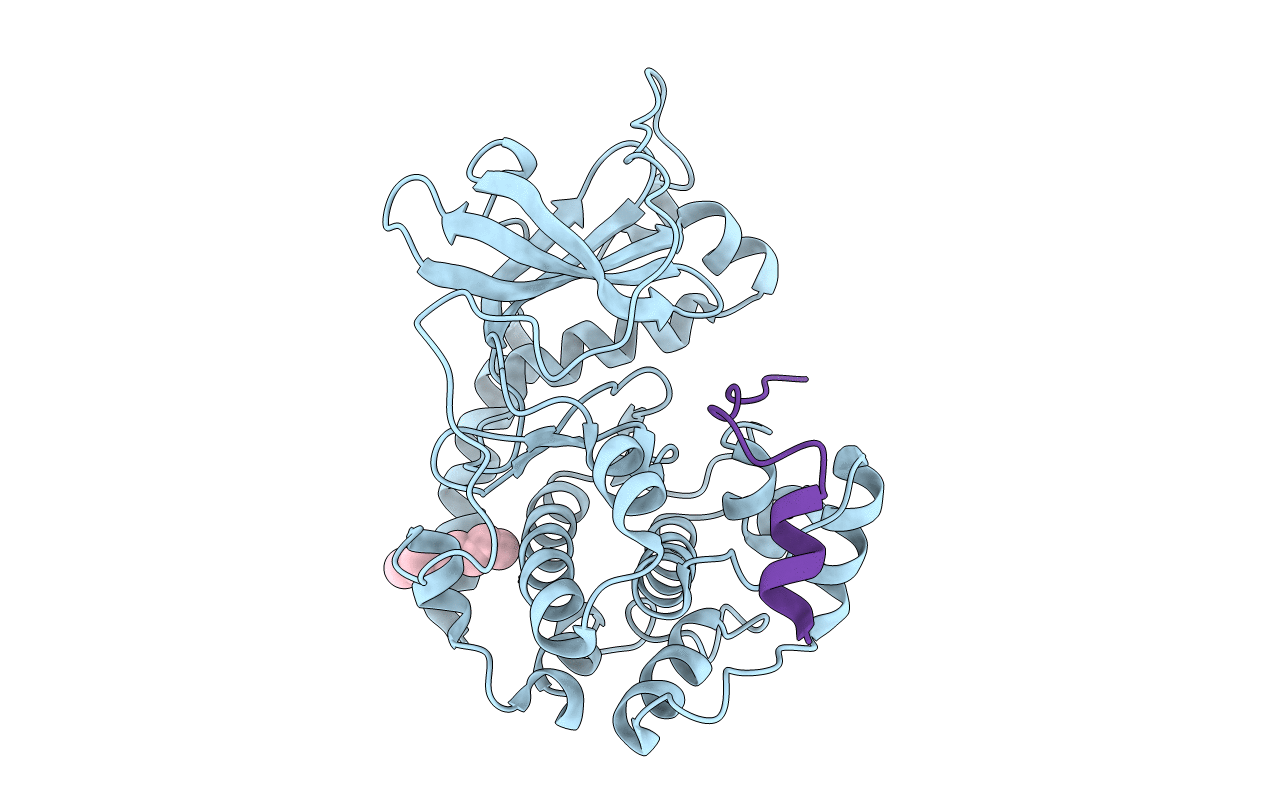
Entry Detail
PDB ID:
1JLU
Keywords:
Title:
Crystal Structure of the Catalytic Subunit of cAMP-dependent Protein Kinase Complexed with a Phosphorylated Substrate Peptide and Detergent
Biological Source:
Source Organism:
Host Organism:
PDB Version:
Deposition Date:
2001-07-16
Release Date:
2001-08-01
Method Details:
Experimental Method:
Resolution:
2.25 Å
R-Value Observed:
0.18
Space Group:
P 21 21 21


